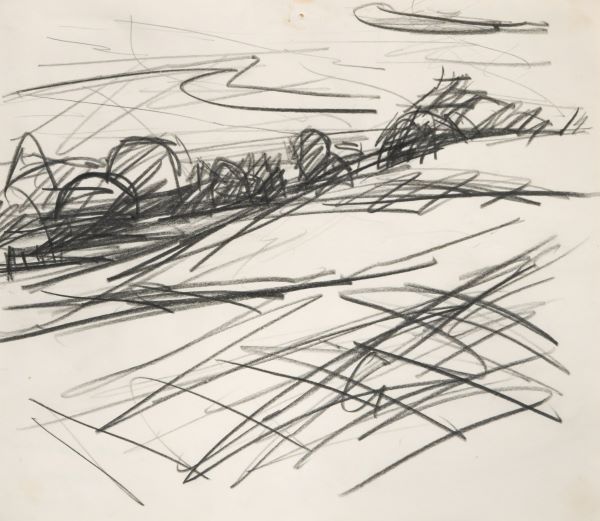

We were sad to hear of the death of Frank Auerbach, a German born British painter, earlier this month (29 April 1931 – 11 November 2024). Auerbach was an important figurative painter who developed intense relationships with particular subjects, whether people or cityscapes.
20/11/2024 Fine Art, Paintings, Drawings & Prints
Born in Berlin of Jewish parents, Auerbach was sent to England to escape Nazism in 1939. Following a childhood at a progressive boarding school, he studied at St Martin’s School of Art and the Royal College of Art after the war from 1948 to 1955, and attended evening classes run by David Bomberg at Borough Polytechnic.
Auerbach made hundreds of drawings over many years from paintings in the National Gallery, always in front of the originals, using the National Gallery paintings as part of his working process and as a reminder of the standards at which to aim. Other source material for his work was to be found within an area of London, from Bethnal Green to Camden Town and Primrose Hill, and with only a few human models, almost exclusively long-term friends, lovers and his wife. Rarely leaving Britain, he lived and worked in London and had the same studio from the 1950s.
Cheffins were fortunate to sell the renowned Auerbach work ‘Primrose Hill Park’ (pictured above) in the February Art and Design sale this year. Captured in charcoals, pastels and oils, in all weathers and at all times of day, Primrose Hill Park not only became one of Auerbach’s most enduring and multifaceted subjects, but became a character in its own right, appearing in many guises over a period of three decades.
Auerbach's documentation of this iconic parkland began in 1954, marking the commencement of a compelling artistic journey. Driven by an almost compulsive need, he continually returned to Primrose Hill, meticulously recording its ever-changing environment. The outcome of his extensive experimentation and keen observations is an extraordinary body of work, ranging from small sketches to bold canvases. The Primrose Hill works, characterised by their almost sculptural quality, showcase a level of confidence and immediacy that can only be achieved through obsessive familiarity.
Beyond the confines of his canvases, Auerbach's association with Primrose Hill is deeply rooted in his personal and professional life. Having called this neighbourhood his home for many decades, the local community, architectural elements and the ebb and flow of daily life significantly influenced and shaped his artistic vision. Auerbach's commitment to capturing the essence of this place goes beyond a mere formal exercise; it represents a profound personal connection to his immediate surroundings. As he himself expressed, "This part of London is my world. I've been wandering around these streets for so long that I have become attached to them, and as fond of them as people are of their pets."
Brett Tryner comments: “Frank Auerbach was an important figurative painter who developed intense relationships with particular subjects, whether people or cityscapes. No doubt his captivating art will continue to live on for many generations to come.”